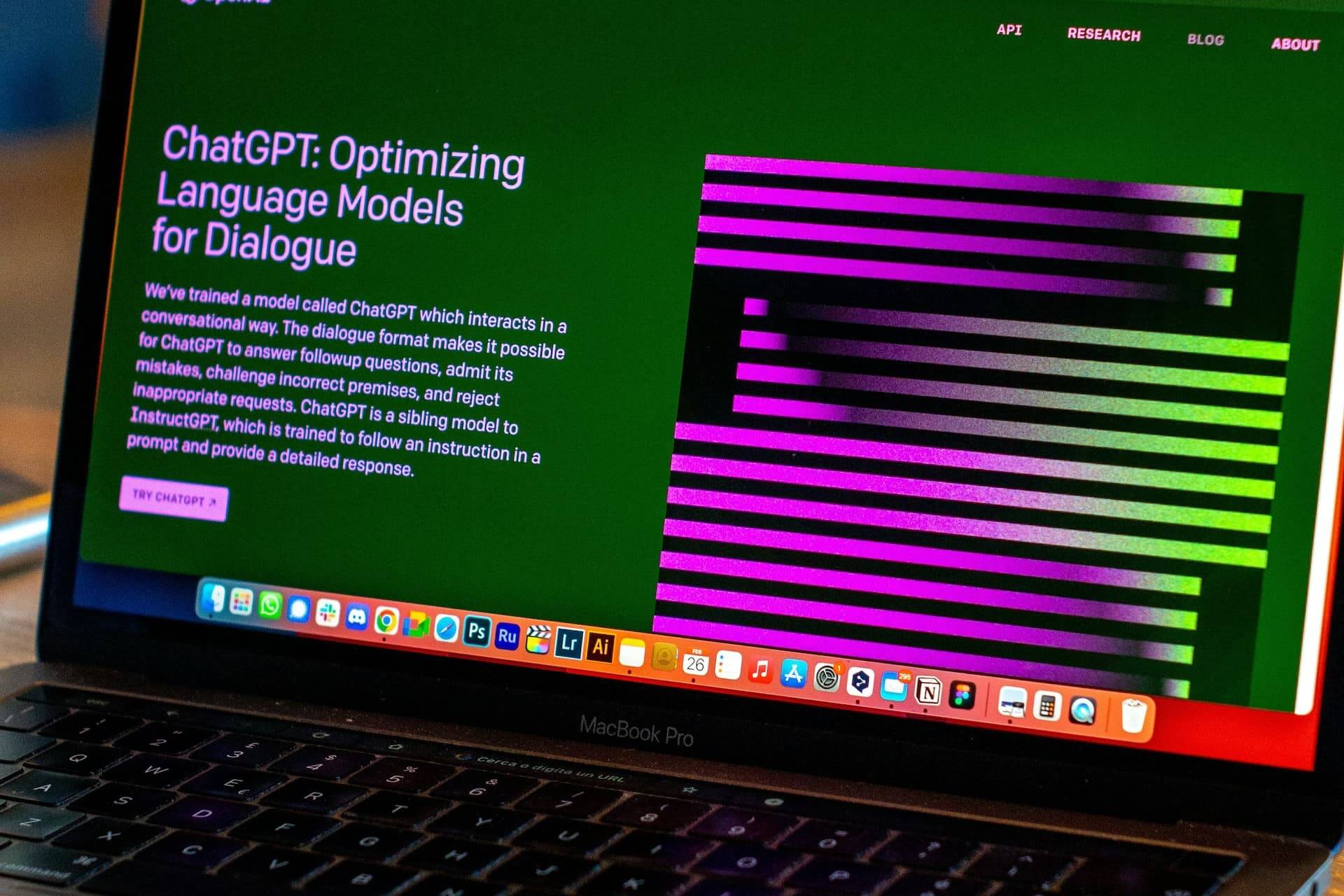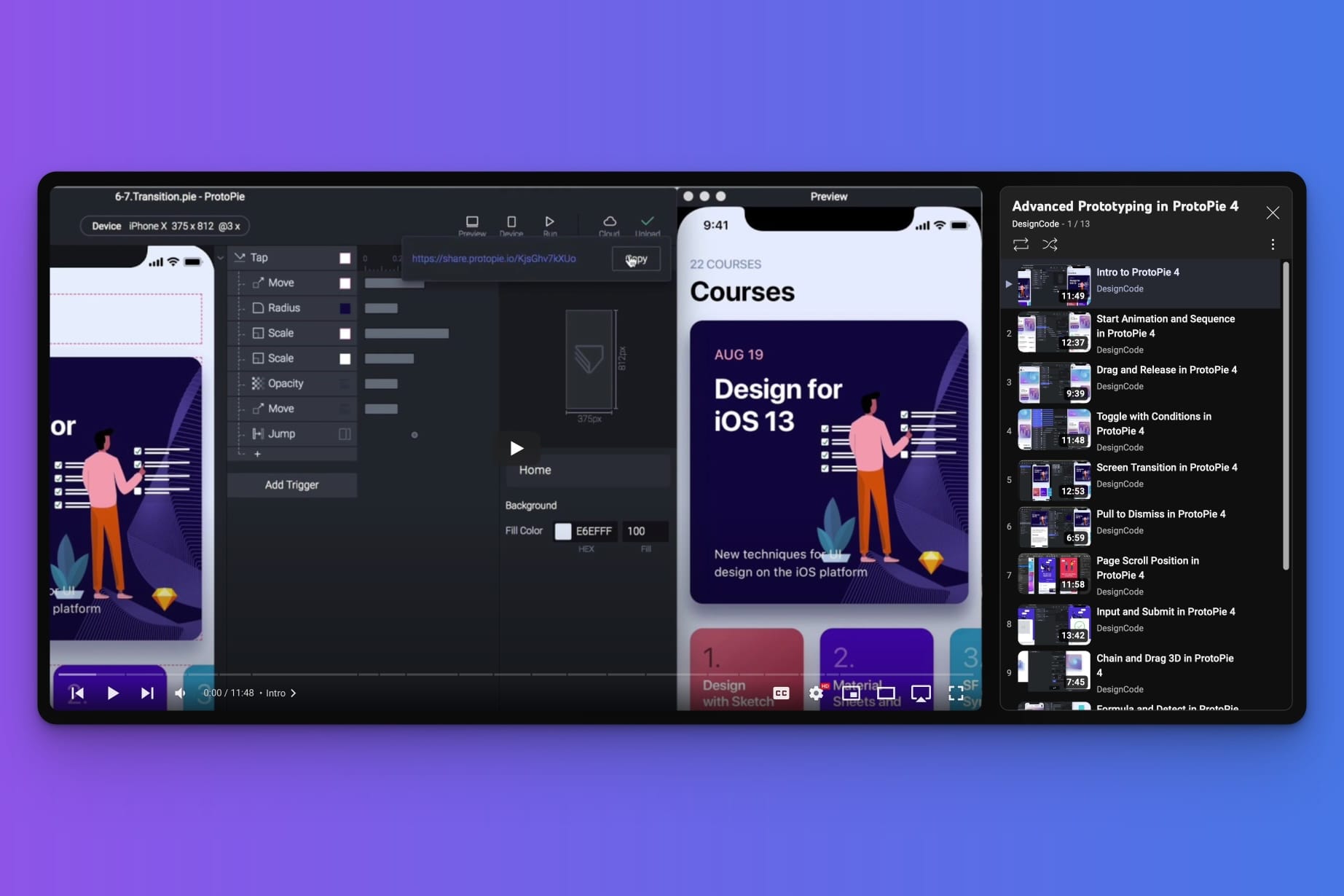Implementing these tips to become a valuable and successful designer
Welcome to our article on becoming a better product designer! Whether you\’re just starting out or looking to level up your skills, we\’ve got some valuable tips to help you improve your craft. As the field of product design continues to evolve, it\’s crucial to stay ahead of the curve and continuously enhance your design skills. By implementing these tips, you\’ll be on your way to becoming a more valuable and successful product designer.
Key Takeaways:
- Continuous learning is essential for product designers to stay updated on industry trends and evolving technologies.
- Effective communication and leadership skills are crucial for collaborating with teams and conveying your design ideas clearly.
- A strong portfolio showcasing your best designs is vital for standing out and attracting potential employers or clients.
- Problem-solving and research skills allow you to think creatively and make evidence-based decisions to improve your designs.
- Understanding the business and management aspects of product design helps you align your design decisions with larger strategic goals.
Make Your Way to the Inside
As Ryan Holiday suggests, to become a successful product designer, we must immerse ourselves in the field and gain comprehensive knowledge. It is not enough to simply have a surface-level understanding; we must delve deep into every aspect of product design and put in the work required to excel in this developing intuitive field.
Success in product design comes from familiarizing ourselves with the intricate details and inner workings of the industry. By staying curious, seeking out new information and perspectives, and continuously expanding our knowledge base, we can position ourselves as experts in our craft.
\”Developing intuitive field demands more than just talent; it requires dedication, perseverance, and a genuine passion for the craft.\” – Ryan Holiday
Making our way to the inside enables us to unlock our full potential as product designers. It allows us to understand the needs and desires of our target audience on a deeper level, transforming our designs into solutions that resonate with users on an emotional level.
Thriving in this field requires a commitment to continuous learning. It involves staying updated on the latest trends, technologies, and design methodologies. By doing so, we can ensure that our designs are not only visually appealing but also functional and user-friendly.
Key Steps to Success in Product Design:
- Immerse yourself in the field and gain comprehensive knowledge
- Stay curious and seek out new information and perspectives
- Continuously expand your knowledge base
- Stay updated on the latest trends, technologies, and design methodologies
- Transform your designs into solutions that resonate with users emotionally
By following these steps, we can make our way to the inside of the product design industry and achieve success in our careers. So let\’s roll up our sleeves, dive deep into the field, and embrace the rewarding journey that awaits us as product designers.
Cut the Design Jargon
George Elliot once said, \”It is simplicity that makes the uneducated more effective than the educated when addressing popular audiences.\”
As product designers, it\’s crucial for us to prioritize effective communication and simplicity in language. Design jargon may be tempting to use, but it often alienates people and hinders effective communication. Instead, we should strive to use language that is understandable to a wide audience, making our ideas accessible and relatable.
When we use complex terms and jargon, we risk creating confusion and disconnecting with our stakeholders. By simplifying our language, we can bridge the gap and foster better understanding and collaboration.
By communicating in plain and concise language, we ensure that our messages are clear and easily understood. Simplicity in language promotes engagement and encourages others to actively participate in the design process.
Key Strategies for Simplicity in Language:
- Use everyday language: Avoid technical terms and instead, opt for familiar words and phrases that everyone can understand.
- Provide context: If a technical term is unavoidable, explain it in simple terms to ensure clarity.
- Visualize concepts: Use visual aids, sketches, or prototypes to illustrate ideas and simplify explanations.
- Focus on the user: Frame conversations around the user\’s perspective, emphasizing how the design impacts their experience.
Remember, effective communication is the key to successful collaboration and meaningful design outcomes. Let\’s strive to cut the design jargon and communicate in a way that truly resonates with our audience.
Differentiate Yourself with a Strong Portfolio
When it comes to product design, having a solid portfolio is a game-changer. It\’s not just about showcasing your talent, but also about standing out from the competition. A well-curated portfolio can speak volumes about your design skills and creative prowess, attracting attention from potential employers or clients.
To create a strong portfolio, it\’s essential to understand and apply the principles of good design. By focusing on aesthetics, usability, and user experience, you can ensure that your portfolio not only looks visually captivating but also effectively communicates your design thinking.
\”Good design is making something intelligible and memorable. Great design is making something memorable and meaningful.\” – Dieter Rams
When selecting projects to include in your portfolio, choose a variety that demonstrates your versatility as a designer. Include both personal and professional projects that showcase your ability to solve different design challenges and work with various mediums.
Key elements to consider when creating your portfolio:
- Showcase your best work: Select your most impressive and successful projects to highlight your skills and expertise. Quality over quantity is the key here.
- Organize your portfolio: Create a clear and intuitive structure for your portfolio. Use categories or filters to allow viewers to navigate easily and find what interests them.
- Create stunning visuals: Use high-quality images, videos, and interactive elements to engage your audience and bring your designs to life.
- Explain your design process: Include descriptions or case studies that outline your design approach, the problem-solving strategies you used, and the impact of your designs.
- Solicit feedback: Seek input from peers, mentors, or industry professionals to refine your portfolio. Their perspectives can help you identify areas for improvement and make necessary adjustments.
Remember, your portfolio is a reflection of your skills and creativity as a product designer. It\’s your chance to impress and leave a lasting impression. So, invest time and effort into developing a strong portfolio that truly showcases your talent and sets you apart from the competition.
Continuous Learning and Skill Enhancement
As product designers, we understand the importance of continuously updating our skills and staying on top of the latest trends and technologies. In order to thrive in this fast-paced industry, it is crucial that we stay updated on current design principles, materials, engineering advancements, and user experience best practices.
One key aspect of continuous learning is staying informed about the latest trends in design. By regularly exploring design blogs, attending conferences, and participating in industry discussions, we can gain valuable insights into emerging design aesthetics and incorporate them into our work. This helps us stay relevant and competitive in an ever-evolving field.
\”I find that the harder I work, the more luck I have.\” – Thomas Jefferson
Additionally, evolving technologies such as augmented reality (AR), virtual reality (VR), and 3D printing have the potential to revolutionize product design. By learning and incorporating these technologies into our workflow, we can push the boundaries of our creativity and deliver innovative solutions that resonate with our audience.
Developing Design Aesthetics
Design aesthetics play a crucial role in captivating users and making our products visually appealing. By staying updated on evolving design trends, we can develop our own unique design aesthetics that set us apart from the competition.
- Explore art and design movements: By studying different art and design movements, such as Art Deco, Modernism, or Minimalism, we can gain inspiration and add depth to our design aesthetics.
- Experiment with color palettes: Understanding color psychology and experimenting with different color combinations can help us create impactful visual experiences.
- Embrace minimalism: Simplifying our design elements and focusing on clear and concise communication not only enhances user experience but also creates a timeless and elegant design aesthetic.
\”Simplicity is the ultimate sophistication.\” – Leonardo da Vinci
By continuously learning and developing our design aesthetics, we can ensure our work remains fresh, engaging, and in line with current trends.
Effective Communication and Leadership Skills
As product designers, our success relies on our ability to effectively communicate our ideas and vision. Clear communication ensures that everyone involved in a project understands our concepts, goals, and requirements. It fosters collaboration, minimizes misunderstandings, and promotes a shared vision.
By honing our communication skills, we can convey our design thinking process and rationale behind our decisions. Taking the time to articulate our ideas in a concise and coherent manner allows us to gain buy-in from stakeholders and build trust in our expertise.
Moreover, leadership skills are crucial for product designers. We often find ourselves leading teams, especially on larger projects. Being able to inspire, motivate, and guide our teammates towards a common goal is vital for project success.
\”Great leaders are willing to sacrifice their own interests for the good of the team.\”
Understanding the strengths and weaknesses of team members allows us to delegate tasks effectively and maximize productivity. We should foster an environment that encourages open and constructive feedback, empowering team members to contribute their unique perspectives and ideas.
Additionally, conflict management is an essential skill for product designers. Conflicts are bound to arise in collaborative settings, and it\’s our responsibility to address them promptly and objectively. By leveraging our leadership skills and effective communication, we can navigate conflicts and ensure a harmonious working environment.
Here are a few ways to enhance your communication and leadership skills:
- Cultivate active listening: Actively listen to understand and show empathy towards others\’ perspectives.
- Practice clarity and conciseness: Express your ideas and instructions in a clear and concise manner, avoiding jargon or complex language.
- Develop emotional intelligence: Be aware of your emotions and those of others, managing them to foster positive interactions.
- Lead by example: Set a positive example by demonstrating professionalism, integrity, and strong work ethic.
- Nurture teamwork: Encourage collaboration, celebrate achievements, and promote a supportive team culture.
- Seek feedback: Regularly solicit feedback from team members and stakeholders to continuously improve your communication and leadership skills.
By continuously strengthening our communication and leadership skills, we become not only better product designers but also effective collaborators and team leaders. These skills enable us to build strong relationships, navigate challenging situations, and achieve outstanding results.
Understanding Business and Management
As product designers, we must possess more than just creative design skills. We also need a solid foundation in business knowledge and strategic thinking. Understanding how our design decisions align with a wider business strategy is crucial for our success. By considering the financial implications of our choices, we can make informed decisions that contribute positively to the overall product.
Building our business knowledge allows us to see the bigger picture and recognize the impact of our designs on the company\’s bottom line. It enables us to communicate effectively with stakeholders, understand their needs, and align our design solutions with their goals. With a strategic mindset, we can incorporate market research, target audience analysis, and competitor analysis into our design process. This holistic understanding helps us create products that are not only visually appealing but also commercially viable.
\”Design without strategy is just decoration.\”
By combining our design expertise with business acumen, we can position ourselves as valuable assets within a company. We become collaborators who contribute to the success of the organization by designing products that meet market demands, drive sales, and enhance the brand\’s reputation.
Key aspects of understanding business and management for product designers:
- Develop a solid grasp of basic business concepts and terminology.
- Gain insight into your company\’s business strategy and goals.
- Consider the financial impact of design decisions and prioritize cost-effectiveness.
- Collaborate closely with stakeholders to understand their needs and align design solutions.
- Analyze market trends, user behavior, and competitor offerings to inform design decisions.
- Communicate effectively with stakeholders, using language that bridges the gap between design and business.
By honing our business knowledge and strategic thinking skills, we elevate our value as product designers. We become well-rounded professionals capable of delivering designs that not only captivate users but also drive business growth and success.
Problem-Solving and Research Skills
As product designers, we need to possess exceptional problem-solving and research skills to excel in our field. We must think outside the box and unleash our creative prowess to come up with innovative solutions for complex design challenges. By embracing a mindset of creative problem-solving, we can unlock our potential to transform abstract concepts into tangible realities.
Research is the bedrock of our design process. We must be proficient in various research methods, meticulously collect data, and skillfully analyze it. This allows us to make evidence-based decisions that shape the outcome of our designs. Through thorough data analysis, we can gain insights, identify patterns, and validate our design choices, ensuring that our solutions align with the needs and preferences of our target audience.
“Research is to see what everybody else has seen and to think what nobody else has thought.” – Albert Szent-Gyorgyi
These research and data analysis skills empower us to uncover new opportunities, untapped market segments, and user insights that drive our design forward. By combining our creative problem-solvingabilities with comprehensive research, we can craft design solutions that resonate with users, inspire delight, and meet their evolving needs.
Key Points:
- Embrace creative problem-solving to find unique solutions
- Utilize various research methods for comprehensive data collection
- Analyze data to make evidence-based design decisions
- Uncover new opportunities and user insights through research
Conclusion
Becoming a better product designer is an ongoing process that requires continuous improvementand honing of design skills. By staying updated on industry trends and seeking opportunities for learning, we can enhance our craftsmanship and elevate our design thinking.
Effective communication and leadership skills play a crucial role in our journey to becoming better product designers. By fostering clear and concise communication, we can ensure our ideas are effectively conveyed and understood. Additionally, developing our leadership skills allows us to collaborate effectively, lead projects, and manage conflicts beneficially.
Understanding business and management concepts is also essential. By appreciating the strategic implications of our design decisions and having a grasp of the financial aspects, we can contribute significantly to the success of the overall product and align our designs with business goals.
Lastly, we must continually work on our problem-solving abilities and research skills. Embracing a creative, solution-oriented mindset enables us to tackle complex design challenges and come up with innovative solutions. By employing research methods and conducting data analysis, we can make informed decisions and maximize the impact of our designs.
FAQ
What are some tips for becoming a better product designer?To become a better product designer, prioritize continuous learning, effective communication, and problem-solving skills. Stay updated on industry trends and seek feedback to enhance your design thinking and master various techniques.
How can I make my way to the inside and succeed in product design?immerse yourself in the field, gain comprehensive knowledge, and put in the work to thrive as a designer.
Why is it important to cut the design jargon and use language that is understandable to a wide audience?Design jargon alienates people and hinders effective communication. By using language that is understandable to a wide audience, product designers can effectively communicate their ideas and vision.
How can I differentiate myself as a product designer?Build a strong portfolio showcasing your best designs and learn the principles of good design to create stunning visuals that demonstrate your skills and attract attention.
How can I stay updated on industry trends and evolving technologies as a product designer?Continuously update your skills, stay on top of the latest trends and technologies in design, understand design principles, materials, engineering, user experience, and incorporate evolving technologies like AR, VR, and 3D printing. Additionally, develop design aesthetics to stay competitive in the field.
What skills do I need to effectively communicate and lead as a product designer?Effective communication and leadership skills are essential. You should be able to clearly communicate your ideas and vision, collaborate with others, lead larger projects, and manage conflicts effectively.
Why is understanding business and management important for a product designer?Product designers should have a good understanding of business and management concepts to make design decisions that fit into a larger business strategy. They should also be aware of the financial implications of their choices.
How can I enhance my problem-solving and research skills as a product designer?Think outside the box and come up with creative solutions to complex problems. Develop proficiency in research methods, data collection, and analysis to make evidence-based decisions that improve the outcome of your designs.
How can I become a better product designer and continuously improve?Hone your design skills, stay updated on industry trends, continuously seek improvement, and fuel your creativity to become a more valuable and successful product designer.
Frederik Roessell
Creative designer with 20 years of design experience working in startups and agencies in Copenhagen. Currently pushing pixels as a Senior Product Designer at a large ecommerce brand.



